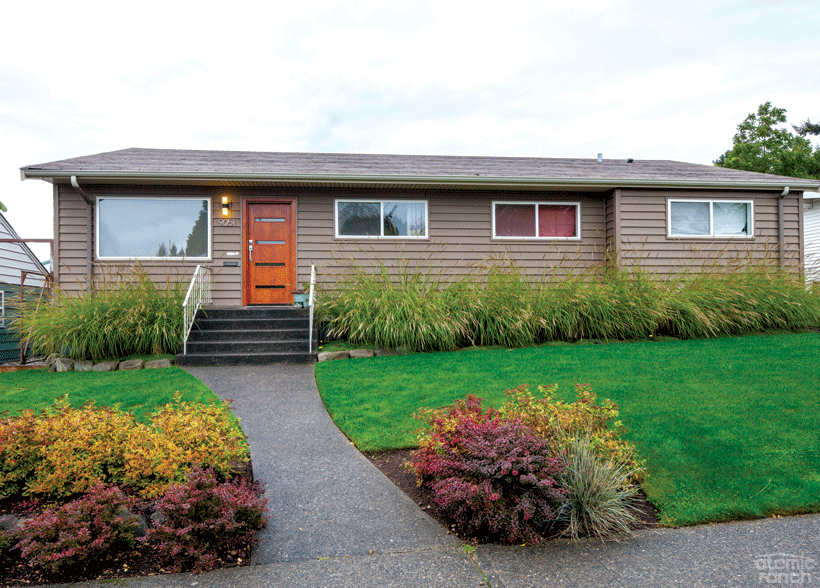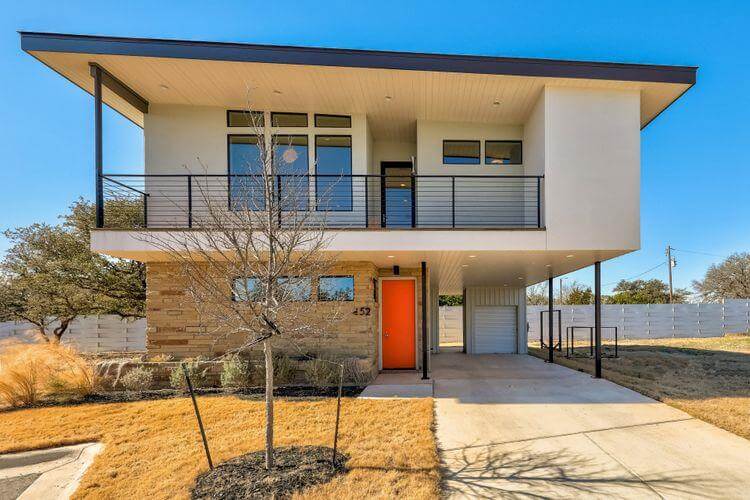Yes.
That style seems common enough in Northern Europe and has been since the Middle Ages:


I don’t think there’s any requirement for something iconic to a location to be entirely absent from the rest of the world.
For me, the most distinctly American architecture, right now at least, is the McMansion. They’re so distinctive there’s a whole blog about it. The design style is “pick a bunch of individual elements that on their own are signifiers of wealth and status, and then throw them together willy-nilly without any regard for tradition or coherence.”
Here’s a sample blog entry.
Edit to add: Discourse is processing this URL very strangely. Instead of a reference to the page, it’s extracting a picture and not offering a clickable link. Here it is as an embed.
You don’t see this kind of construction anywhere else.
That looks almost like it’s trying to emulate an old house that has been extended again and again at different times - sort of like having a fake history of development
I no longer live in Belgium but I remember fondly their hilariously ugly houses:
Sorry to link to bored panda, the original is somewhere in Facebook or Pinterest.
Here’s another link:
McMansions are no longer just an American thing.
Ghost town of tiny faux French chateaus in Turkey sits empty after developer goes bankrupt
There’s also no requirement for assuming that someone providing additional information related to your post is somehow negating or disagreeing with it. ![]()
For Israel - well, if I were cynical I’d say ruins (Roman, Byzantine, Arab, Crusader, what have you) are our dominant form of architecture, but barring that, I’d say “White City” Bauhaus:
Fair enough. My apologies for misunderstanding you.
New England saltbox
Adobe dwelling.
The type of “old west” architecture (for general stores, etc) that had a flat false front, and the building behind it was a plain straight building with a peaked roof.
Can’t think of the term, but there was a name for regional buildings which were so generic that the builder could erect one without referring to blueprints.
That thing just boggles my mind. Who would want a faux-ornate house that is in a tight grid of identical faux-ornate houses? We’ve been thinking about moving house recently and one of the requirements near the top of my list was always ‘must not be identical to every other house in the street’.
I mean, I get that it makes the design process cheaper to just copy/paste them. If they’d styled the development as some sort of representation of a walled city like Carcassonne it might have worked.
I wonder just how common that actually was in real life. Most of the ones we are familiar with are just a handful of Hollywood backlots used over and over again for hundreds of Westerns.
That might be the reason the developer went bankrupt. A pity it did not happen sooner.
Yeah, I could see carbon-copy working OK for a simpler design (many successful projects have been built that way) - I think it’s something about the fact that if you saw one house that looked like that, it would be disctinctive, but hundreds of them all together just looks weirdly vulgar
There could be a serious problem of drunk people, heading home after a night at the pub, walking into the wrong house.
(Anybody remember the Homer Price stories by Robert McCloskey? One of the stories involved a residential development of all-alike houses that had problems like this.)
These buildings are seen all over small town western Nebraska. A fair number of them are still be used as mercantile buildings, barber shops, etc.
I just remembered the term, “vernacular architecture”. Although, looking it up, the dictionary definition is “architecture concerned with domestic and functional rather than public or monumental buildings”.
A better definition is something like: architecture suited to the locality and the materials and traditions of the place it’s built.


/mid-century-modern-architecture-5072981-hero-b2102756fb5544ce962e0701f9e44e65.jpg)

